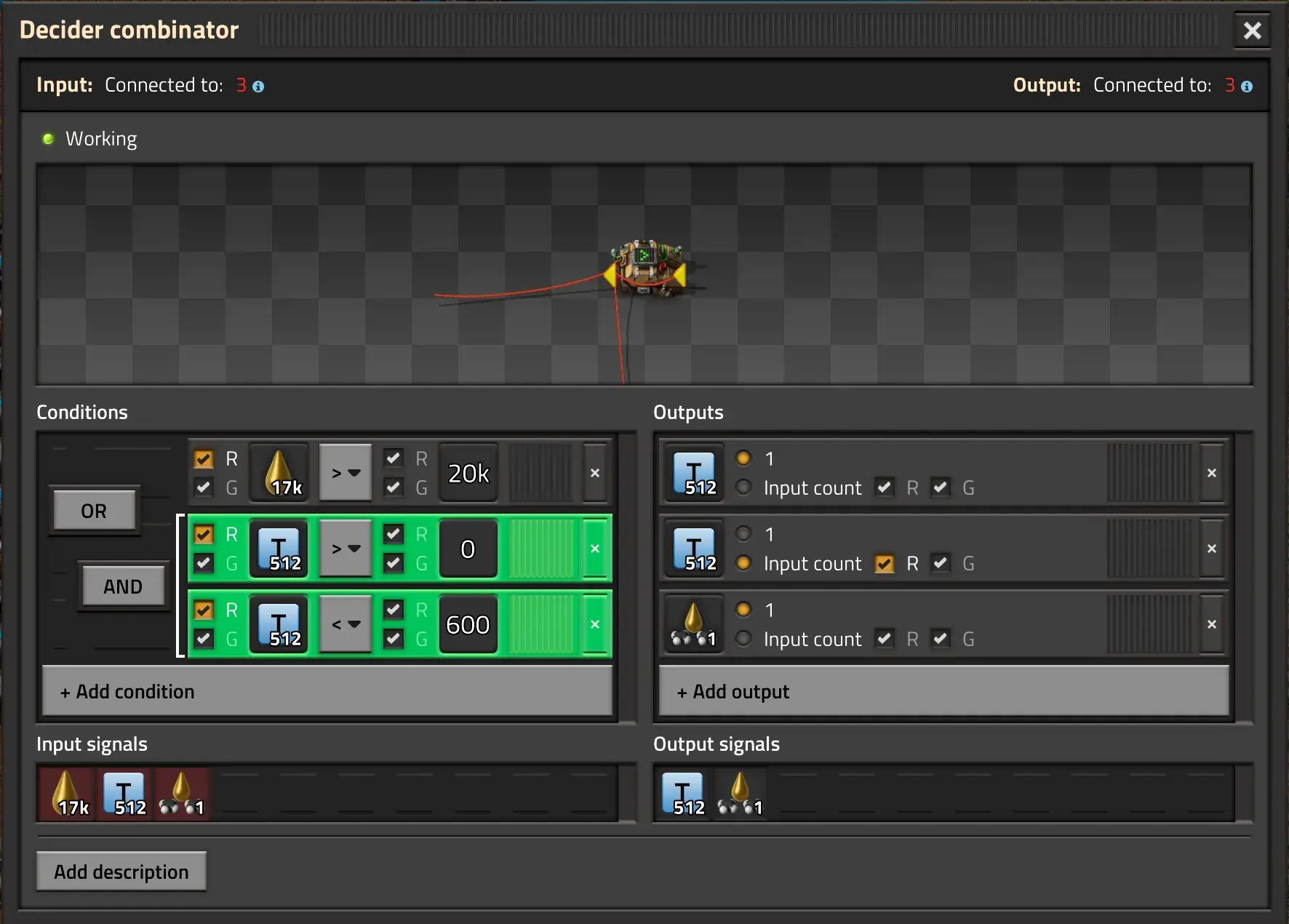With the update there was an overhaul of what combinators can do.
I had the problem that my oil cracking would flicker, turning on for a split second then back off again, hovering right around the set threshold. (Probably worsened by me not switching a pump anymore like what used to be the norm.)
The old method would have been an SR latch, which enables at a higher set point and disables again at a lower reset point. This used to take 3 combinators.
~~I figured it should be possible to do better now, but could not come up with a way to cram an sr latch into a single combinator, since it can only be either on or off at one time. I think it takes two combinators to build an sr latch now.~~
A single-combinator SR latch is in the comments.
Instead I came up with another way to "debounce" my cracking.

Here shown is the combinator sending the signal to enable cracking (the recipe icon of light oil cracking) while the actual activation signal, light oil above 20k, is off.
The signal was on for a moment, then after the cracking started up the oil level immediately dropped below 20k again. But now the second condition, T between 0 and 10s, is active. While the combinator is active, it is sending out 1 plus the old count to T, counting it up once per frame. It remains active while the condition is active or while T is counting up but has not yet reached 10s (at 60 ticks per second).
This ensures that every time the cracking runs, it runs for at least 10 seconds.
After these 10+ seconds, the level should take a while before rising above the threshold again.
For me, this successfully made the row of chem plants turn on in one smooth go.



Ofc, no problem.
Since this thread was initially about beginner friendly distros, I wanted to ensure I wasn't going around recommending an inferior or problematic distro to new users as their first experience.